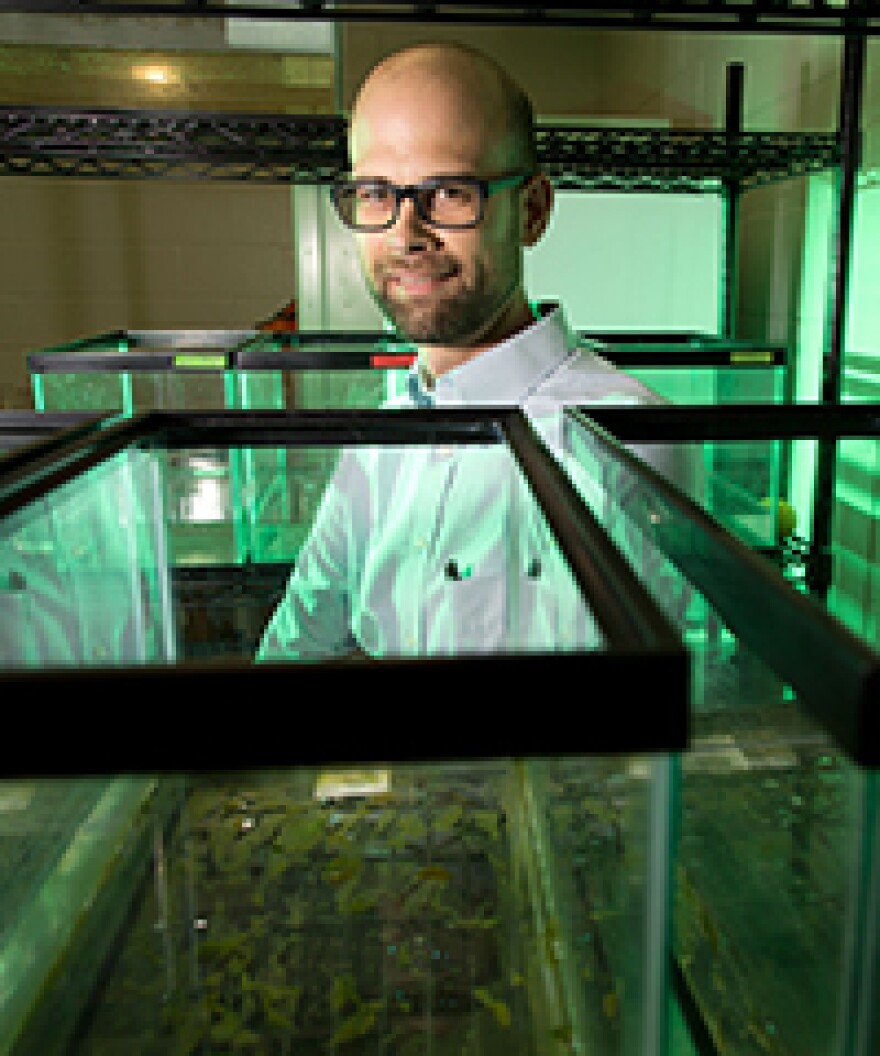The science of disease modeling can give public health officials clues about how far and how fast diseases like the coronavirus might spread, and how severe they might be.
Omicron is yet another variant of COVID-19, and researchers and public health officials are actively working on figuring out more information on this new twist in the ongoing saga of the Coronavirus.
The thing that we have to figure out now is how is Omicron going to respond in the face of vaccine pressure.
While public health officials are working to track where the virus is, other researchers are looking ahead modeling the future of the disease and its spread.

Dr. John Drake, professor at the University of Georgia's Odum School of ecology, and the director of the University Center for the ecology of infectious diseases, joins WUGA's Chris Shupe to talk about the science behind predicting how pathogens behave, and what the future might hold for the new Omicron variant of Covid.
This transcript has been edited for clarity
Chris Shupe:
Welcome back to Athens News Matters.
Dr. John Drake:
Good morning, Chris.
CS:
So before we get into the actual variant, let's just revisit quickly the process of modeling an infectious disease. What key factors are examined when creating a model for a disease?
JD:
Basically, what a model is is a representation of what we think is going on in some process in nature. And so with infectious diseases, we might, for instance, be developing a model for the transmission or the movement of the virus in space. And actually, in the case of Omicron, one of the things that I think will be most useful in the coming weeks is evolutionary models.
CS:
Hmm. Sounds interesting. Tell me a little bit more about evolutionary models.
JD:
The virus itself has a genome. And as an RNA virus, that genome mutates a lot. The variants that we've seen arise when there are specific mutations that give the virus new properties. If we have a model of how those changes occur, then maybe we can infer some things about how quickly it's spreading.
CS:
I suspect there's nothing actually easy about any of this. But is it somewhat easier to model a variant of a pre existing disease than, say, a new infectious agent?
JD:
Certainly. So when the SARS-CoV-2, which is the virus that causes COVID-19, was first discovered in late 2019 and early 2020, we knew very little about its transmission. How is it that people caught it from one another? Of course, the thing that we have to figure out now is how is Omicron going to respond in the face of vaccine pressure. Our vaccines were developed to target earlier variants, including Alpha and Delta. We don't yet know how well they will work against Omicron. And there are some clues in the gene sequence of the Omicron virus that suggests it may not work as well against Omicron, as it does against Delta.
CS:
Interesting. I know we have the current COVID models. What more can those models sort of suggest as we look at Omicron?
JD:
Well, one of the things that we know from modeling exercises is that it's very, very difficult to keep a virus out of a place. But there has been very rapid response around the world limiting the movement of people. And I suppose to some extent that might be useful with respect to Omicron, to buy a little bit of time as we develop our response. But one of the things that models show us is that is not a long term, effective response.
CS:
As we look back at COVID-19, in general, tell us a little bit more about how these models have actually helped public officials decide certain steps towards trying to contain the virus.
JD:
One of the things that I think they're very useful for is looking at the effectiveness of different practices and policies. So for instance, the effectiveness of face masks, which we know to be effective against all variants. Another thing that we can use models for is decision support. So we can ask “if then” questions. One of the things that models have shown us is that if we would deploy vaccines more effectively, if we would have higher vaccine coverage, then containment would actually be much more achievable. But there's also the willingness on the part of the population to receive those vaccines, and models can't solve that problem for us.
CS:
Well, I know there is so much that we don't know, especially about this new variant. But just based on what you do know, what are some of the concerns we should have about this new variant?
JD:
So most of what we know about Omicron at this stage does come from the gene sequence. We know that the key vaccine manufacturers like Pfizer and Moderna, and Johnson & Johnson are studying the effectiveness of their vaccines against the Omicron variant. And we can expect data from these companies probably within another week to 10 days or so. One thing that's really important is that there have been 32 separate mutations associated with just one gene known as “S,” because it codes for the spike protein. The spike protein is important because it's found on immune response and therefore the standard vaccine target. So it's for this reason that it's quite possible that Omicron could be what people are calling an escape variant.
In addition to these mutations that might confirm immune escape, there's another interesting angle, which is something called S-Gene Target Failure. S, or spike, is just one of the genes that's targeted by PCR. And in some of these PCR tests, the S-gene fails. So we fail to detect the spike protein. And so when that happens, what you have is a PCR test that says there's something special about this variant. I expect many countries around the world will be using S-Gene Target Failure to try and follow the path of Omicron during the epidemic, and I expect here in the US we’ll primarily focus on genome sequencing.
CS:
So what does all this mean for our listeners, as we all move into the holidays?
JD:
You know Chris, the thing to remember is that the greatest threat in the U.S remains the Delta variant. And we know that the vaccine works very well to protect against Delta. People who haven't been vaccinated should seek a vaccine if they're eligible. And then the other thing is that masks and physical distancing work against all variants.
CS:
Fair enough. Dr. John Drake is a professor at UGA and the director of the University Center for the Ecology of Infectious Diseases. Thanks for stopping by.
JD:
Thank you, Chris. It's my pleasure.





